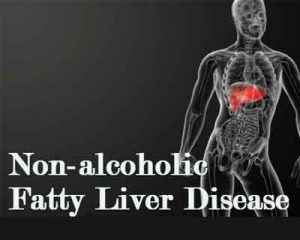- Home
- Editorial
- News
- Practice Guidelines
- Anesthesiology Guidelines
- Cancer Guidelines
- Cardiac Sciences Guidelines
- Critical Care Guidelines
- Dentistry Guidelines
- Dermatology Guidelines
- Diabetes and Endo Guidelines
- Diagnostics Guidelines
- ENT Guidelines
- Featured Practice Guidelines
- Gastroenterology Guidelines
- Geriatrics Guidelines
- Medicine Guidelines
- Nephrology Guidelines
- Neurosciences Guidelines
- Obs and Gynae Guidelines
- Ophthalmology Guidelines
- Orthopaedics Guidelines
- Paediatrics Guidelines
- Psychiatry Guidelines
- Pulmonology Guidelines
- Radiology Guidelines
- Surgery Guidelines
- Urology Guidelines
Management of Nonalcoholic liver disease (NAFLD)-AASLD Guideline

American Association for the Study of Liver Diseases (AASLD) has released its latest guideline on Diagnosis and Management of Nonalcoholic Fatty Liver Disease, NAFLD that has appeared online In JAMA. This practice guidance is an update of the 2012 practice guideline and was commissioned by the AASLD and developed by a panel of experts. The target population is individuals with nonalcoholic fatty liver disease (NAFLD). This guidance may help standardize evaluation and management of patients with NAFLD.
Nonalcoholic fatty liver disease affects about 25% of the adult population globally and is strongly associated with metabolic syndrome, affecting most patients who have dyslipidemia, obesity, or type 2 diabetes. Long-standing NAFLD and NASH can result in cirrhosis and its complications, including hepatocellular carcinoma. Therefore its early diagnosis and management should be a priority. Diet and exercise remain the mainstay of therapy for NAFLD. The guideline cites evidence that weight loss of 5% to 7% was associated with the stabilization or improvement of liver fibrosis on biopsy, and weight loss of 10% was associated with improvement in all histologic features of NASH.
Major recommendations
Patients with incidental hepatic steatosis detected on imaging who lack any liver-related symptoms or signs and have normal liver biochemistries should be assessed for metabolic risk factors (eg, obesity, diabetes mellitus, dyslipidemia) and other causes of hepatic steatosis, including alcohol consumption (>14 drinks per week for women; >21 drinks per week for men) and medications.
Routine screening for NAFLD in high-risk groups is not advised because of uncertainties surrounding diagnostic tests and treatment options, along with lack of knowledge about long-term benefits and cost-effectiveness of screening.
The FIB-4 (age, aspartate aminotransferase, alanine aminotransferase, platelets) and NAFLD Fibrosis Score (NFS, which adds body mass index and albumin) are clinically useful tools to predict bridging fibrosis.
Vibration-controlled transient elastography (VCTE) or magnetic resonance elastography (MRE) can noninvasively assess for advanced fibrosis.
Weight loss generally reduces hepatic steatosis, either by hypocaloric diet alone or in conjunction with increased physical activity.
Pharmacologic treatments should be limited to patients with biopsy-proven nonalcoholic steatohepatitis (NASH) and advanced fibrosis.
Statins can be used to treat dyslipidemia in patients with NAFLD, NASH, and compensated NASH cirrhosis.
For Further reference log on to :
doi:10.1001/jama.2018.17365

Disclaimer: This site is primarily intended for healthcare professionals. Any content/information on this website does not replace the advice of medical and/or health professionals and should not be construed as medical/diagnostic advice/endorsement or prescription. Use of this site is subject to our terms of use, privacy policy, advertisement policy. © 2020 Minerva Medical Treatment Pvt Ltd